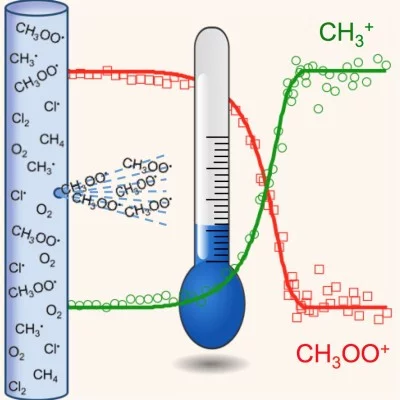Although decades of research has provided thorough reaction mechanisms, particularly for gas-phase processes encountered in combustion and atmospheric chemistry, there is an acute need for developing predictive models. The study of reactive intermediates is also of fundamental interest to reveal the underlying factors driving chemical reactivity. Furthermore, while identifying fleeting radical intermediates may be central to understanding reaction mechanisms, they are often difficult to prepare in sufficient concentrations and exhibit far too short lifetimes to be characterized using standard analytical tools. Photoelectron photoion coincidence spectroscopy is among the few experimental techniques that can be routinely applied to characterize reactive intermediates prepared by jet-stirred reactors, model flames, pyrolysis, discharge and catalytic reactors, as well as laser photolysis induced chemical reactions.
Researchers from the Swiss Light Source, the University of the Pacific, the University of Nevada, and Sandia National Laboratories used the recently constructed CRF-PEPICO endstation at the VUV beamline to produce chlorine atoms photolytically. These were used to form methyl radicals (CH3) in a bimolecular reaction with methane, which, by addition of oxygen, yield the methylperoxy radical, CH3OO. The threshold photoelectron spectrum and the breakdown diagram of methylperoxy were recorded. The former can be modeled by calculating Franck–Condon factors for vibrational transitions, which also helped to understand the electronic states and the conformational behavior of the sample. The breakdown diagram characterizes the dissociation of the parent ion to form a fragment methyl cation and a neutral oxygen molecule and yields the sub-kJ mol–1 reaction energy. It is possible to scan the internal energy distribution of the neutral sample over the dissociation barrier by tuning the photon energy. The breakdown diagram is, thus, directly related to the internal energy distribution of the sample, which in turn is determined by the sample temperature. In this study, the researchers could confirm that methylperoxy radicals, present at less than ten billionth of ambient gas-phase concentrations, were at room temperature, i.e., thermalized completely thanks to the few ten thousand collisions within the reactor. By determining an accurate dissociative photoionization threshold, the enthalpy of formation of the methylperoxy radical could also be derived.
The approach is generally applicable not only to identify and characterize reactive mixtures, but, in certain cases, also to measure time-resolved temperature profiles in operando conditions.
Contact
Dr. Andras BodiVUV Spectroscopy Group
Paul Scherrer Institut
Telephone: +41 56 310 44 71
E-mail: andras.boedi@psi.ch
Original Publication
Radical Thermometers, Thermochemistry, and Photoelectron Spectra: A Photoelectron Photoion Coincidence Spectroscopy Study of the Methyl Peroxy RadicalKrisztina Voronova, Kent M. Ervin, Krisztián G. Torma, Patrick Hemberger, Andras Bodi, Thomas Gerber, David L. Osborn, and Bálint Sztáray
The Journal of Physical Chemistry Letters, 2018, 9, 534−539.
DOI: 10.1021/acs.jpclett.7b03145
